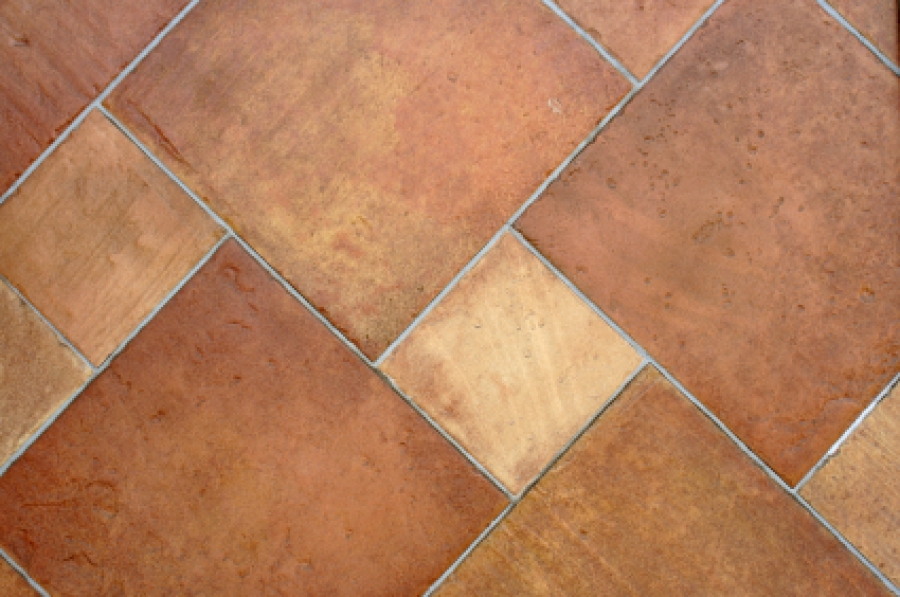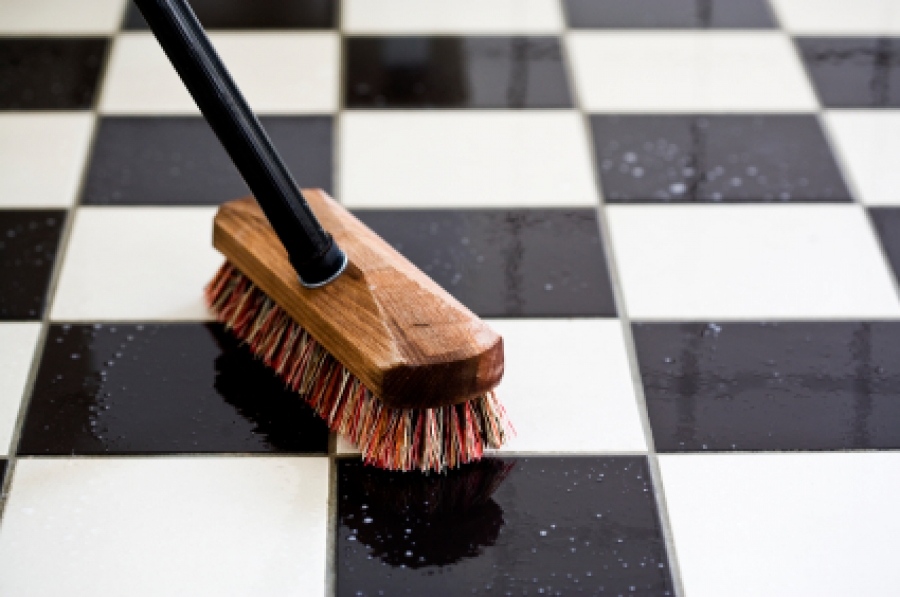Tile Flooring 101: Considerations
Tile flooring can be installed in a variety of locations. Prior to buying tile for your flooring project take the time to answer a few questions: Is the tile going to be located indoors or outdoors? What is the room going to be used for? Is the tile going to be installed in a wet area? How much foot traffic does the room experience on a daily basis? Identifying answers to these questions will define a floor tile that will have the specific characteristics to meet your needs.

For instance, if you live in an area that experiences freezing winter temperatures and intend on installing a tile floor outside, you’ll want to purchase a tile that can withstand freeze/thaw cycles. If you are installing a tile floor on a heavily travelled hallway in your home, you’ll want to purchase a floor tile with high abrasion resistance to minimize surface wear. If you are installing tile in a bathroom, you’ll want to purchase a textured or unglazed floor tile with low water absorption to prevent moisture damage and slip and fall accidents. Also, if you have children and/or pets you might consider purchasing an impervious floor tile, given the potential for the variety of moisture accidents that could occur.
After defining the needs of a space, the suitability of a tile for a given application can be determined with test result information that is based on national testing standards and provided to you by a tile’s manufacturer or fabricator. While some tests are specific to either ceramic or natural stone tile, others apply to both.
Grade
Grade defines the quality of ceramic tile as determined by the American National Standards Institute (ANSI) test A137.
Standard Grade meets the minimum standards. Used on floors or walls.
Secondary Grade is similar to Standard Grade with minor visual imperfections. Used on floors or walls.
Cull Grade does not meet minimum standards. Tile is discarded or used for decorative applications. Not intended for floors.
Classification
Classification defines the quality of natural stone marble tile as determined by the Marble Institute of America.
Group A marble tile has no faults.
Group B marble tile may have filled voids or small holes.
Group C marble tile has filled, possibly reinforced voids or faults.
Group D marble tile has several faults.
Wear Rating
Wear rating defines the abrasion resistance of ceramic tile as determined by the Porcelain Enamel Institute (PEI).
PEI I has the least durable surface and is not intended to be used as flooring. Used primarily as wall tile or decoration.
PEI II is durable enough to withstand light residential foot traffic. Used primarily in bathrooms and closets.
PEI III is durable enough to withstand moderate residential foot traffic. Used primarily in kitchens and living areas.
PEI IV is durable enough to withstand heavy residential or light commercial foot traffic. Used primarily in entryways and hallways around the home. Commonly used in commercial spaces such as offices or salons.
PEI V is durable enough to withstand heavy commercial and industrial traffic areas. Commonly used in educational, retail, and industrial applications.
ASTM C241 defines the abrasion resistance of natural stone tile. Unlike ceramic tile, types of natural stone tile have thousands of varieties, with unique characteristics. These unique characteristics and the level of surface finish will affect each stones abrasion resistance.
Scratch Resistance
Scratch resistance defines the hardness of a tile as determined by Mohs scale test which utilizes 10 minerals, the softest being Talc (#1) and the hardest being Diamond (#10).
A numerical value of #5 or greater is suitable for residential applications.
A numerical value of #7 or greater is suitable for commercial applications.
Water Absorption
Water absorption defines porosity of ceramic tile as determined by the American Society of Testing Materials (ASTM) test ASTM C373.
Non-vitreous is the most absorbent, more than 7%. Should only be used inside the home where there is no moisture or humidity.
Semi-vitreous is moderately absorbent, 3-7%. Can be used in most areas inside the home.
Vitreous has low absorption, 0.5-3%. Suitable for wet areas and outdoor applications.
Impervious has the lowest absorption, less than 0.5%. Suitable for all applications.
ASTM C97 defines porosity of natural stone tile. Unlike ceramic tile, types of natural stone tile have thousands of varieties, with unique characteristics. These unique characteristics will affect stones porosity.
Slip Resistance
Slip resistance defines the slip resistance of a ceramic or natural stone tile as determined by the American Society of Testing Materials (ASTM) test ASTM C1028. Coefficient of Friction (COF) is defined by a numerical range between zero and one. Tiles have both wet and dry values.
A lower number has less friction, traction and a slipperier surface. A tile with a COF value less than 0.60 is moderately skid resistant and doesn’t meet the Americans with Disabilities Act (ADA) guidelines. ADA guidelines require a tile with a COF of .60 or greater.
A higher number has more friction, traction and is less slippery. A tile with a COF value greater than .80 is highly skid resistant.
Frost Rating
Frost rating defines a tile's ability to withstand damage caused by freeze/thaw cycles as determined by the American Society of Testing Materials (ASTM) test ASTM C1026. A frost rating is an indication of a tile’s ability to withstand freeze/thaw cycles. If no indication is present the tile is unable to withstand freeze/thaw cycles. Tile that is not able to withstand freeze/thaw cycles is not suitable for outdoor use.
ASTM C666 defines freeze/thaw durability of natural stone tile. Unlike ceramic tile, types of natural stone tile have thousands of varieties, with unique characteristics. These unique characteristics will affect natural stones freeze/thaw durability.
Consistency of Appearance
Consistency of appearance defines the variation or consistency of shade and texture of a specific tile product.
Random has significant variation of shade and texture.
High has variation of shade and texture.
Moderate has some variation of shade and texture.
Low is consistent in both shade and texture.
Appearance and Pattern
After defining a suitable type of tile, consider its appearance and floor pattern. Appearance and the pattern of a tile floor are determined solely by your personal taste. Over the entire realm of tile flooring products, thousands of color selections are available. In addition, there are several different shapes of tiles, such as mosaics, square, rectangle, octagon, circle, hexagon, and triangle that can be organized in a variety of floor patterns. Typically, floor tiles can be as small as 3/4” x 3/4” or as large as 24” x 24”, while the depth of tile flooring ranges from 1/4” up to 3/4” thick. Generally speaking, natural stone tiles are thicker than other types of tile floor materials.

Jeff Calcamuggio
Jeff is an Editor-at-Large for Buildipedia.com who writes and edits Featured At Home and Knowledgebase content. Prior to joining Buildipedia, Jeff's work experience included carpentry, construction documentation, specification writing, construction administration, project management, and real estate property inspection. Jeff is a member of the Construction Specifications Institute (CSI) and an educator at Columbus State Community College and enjoys challenging DIY home improvement projects.



